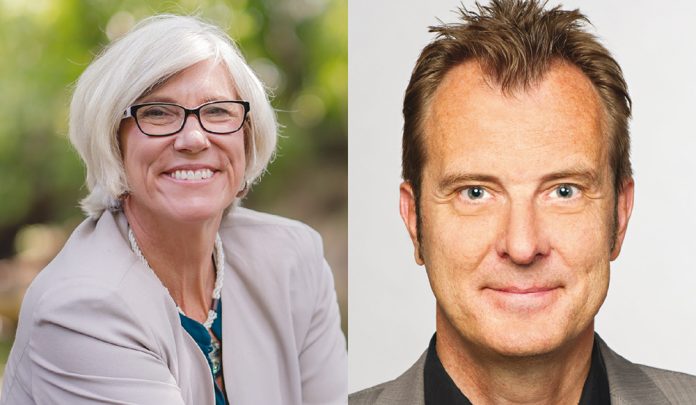
At the 30th anniversary of IWA’s specialist group, water professionals discussed how reusing water can be the ‘cornerstone of the circular economy’
In Long Beach, California, host of the 11th “IWA Reuse 2017” conference, water professionals shared field experience, 400 abstracts, and a sense that water reclamation and reuse was going mainstream, due to the twin forces of regulatory ‘push’ and market ‘pull’.
Michael McMennis, of the Kiewit Engineering Group said rules ensured that a 300MW California power plant he designed had to reuse 87 percent of its wastewater for cooling. Yet industries are investing in reuse to secure reliability. “The CEOs of some of our largest clients are concerned that they’re going to run out of water,” explained panelist Michael Lesniak, of Ecolab. Meanwhile, Cheryl Davis called for more incentives that reward companies for managing water more sustainably.
Punctuating wide ranging technical discussions, water reuse luminary Takashi Asano of UC Davis highlighted how far the water reuse industry has come during his 40 years of experience. His words were backed by deeds, as site visits showcased cutting-edge water recycling projects.
Visitors to the Orange County Water District Groundwater Replenishment System had tasting options, and global competition, since Peter Joo Hee Ng, CEO of PUB, Singapore’s national water agency, had also distributed bottled samples from Singapore’s own pioneering marketing venture of (recycled) NEWater. And the Metropolitan Water District’s General Manager Jeff Kightlinger discussed his city’s plan to build America’s largest advanced purification plant, to reuse over 567,000 m3/day.
Such milestones suggested the larger world is at last recognising the inherent but neglected value of wastewater, defined by George Tchobanoglous as “a renewable, recoverable source of drinking water, resources, and energy.”
Beyond recent technology advances, timely discussions focused on the role of and demand for water reuse in mitigating climate change impacts, or applied to water and food, urban and industrial use.
“This milestone for the global water reuse community illustrated the growing applications of water reclamation and reuse as key elements of integrated water resource management,” said Jörg E. Drewes, Chair of the water reuse specialist group, and Professor of Urban Water Systems Engineering at the Technical University of Munich. Drewes showcased recent trends in water reuse planning, and was excited to see reuse become “a cornerstone of a circular economy, embracing the concept of resource recovery, including water, energy and nutrients.”
One theme centred on risk. IWA President Diane D’arras addressed water reuse in the context of increasingly at-risk Cities of the Future and Basins of the Future. Joan Rose of Michigan State University praised water reclamation researchers who “have led the way
in monitoring, risk assessment and treatment innovation.” Indeed, these efforts took a leap forward during the
last decade, said Stuart Khan of the University of New South Wales. “While qualitative risk matrix assessments still have an important role to play, the need to quantify performance variability, reliability and likelihoods of failures has produced some impressive research from both industry and academia.”
There was room for improvement. Shane Snyder felt “disappointed to see relatively few presentations from foreign participants.” And Ian Law was “surprised by the lack of discussion on the importance of source control and the impact that the type and performance of the wastewater treatment plant has on the downstream advanced water treatment plant.” There was only one paper covering these two important aspects at the conference, which focused more on potable reuse in developed economies than “the full spectrum of reuse opportunities and applications.”
Yet ultimately, Olivier Patrick of the National University of Singapore hailed the conference as a ‘landmark’ that succeeded through its combination of “large attendance, right mix of industry and academic representatives, and intergenerational exchange.”







